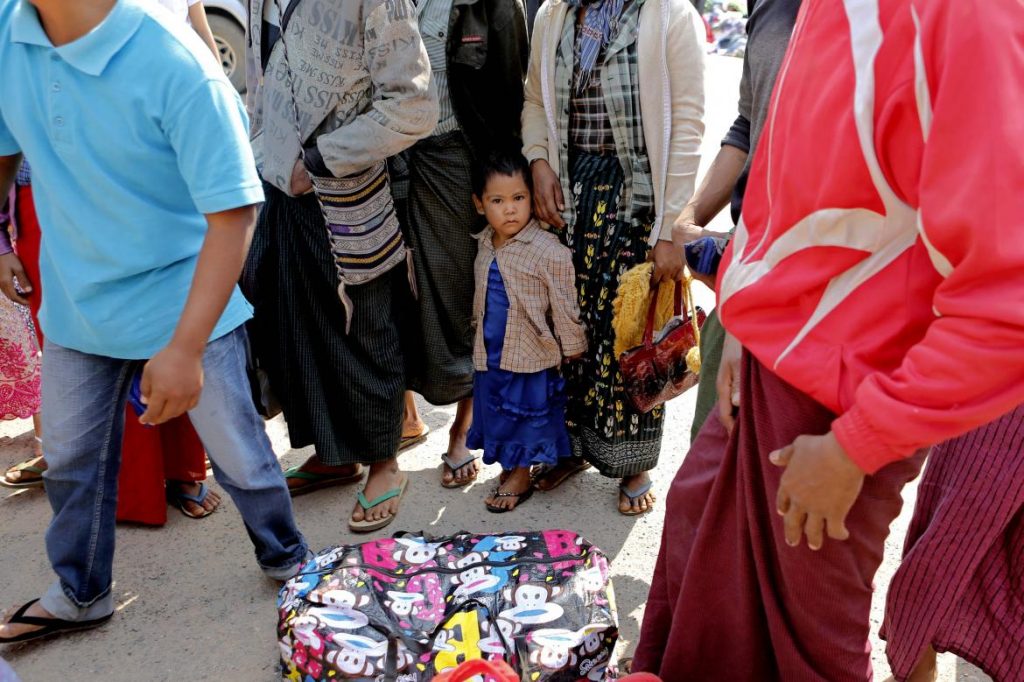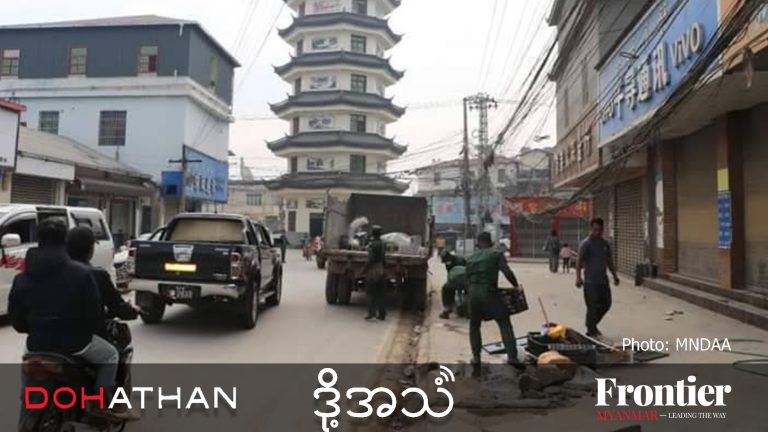China had a historical role in contributing to conflict along Myanmar’s northern border and it has a responsibility to help bring the fighting to an end.
By SITHU AUNG MYINT | FRONTIER
THE MARCH 8 issue of the Global Times, a tabloid mouthpiece of the Chinese Communist Party, included a commentary in which China said it would not do to Myanmar’s Kokang Self-Administered Zone what Russia did to Crimea.
The Global Times commentary was referring to Russia’s invasion and annexation of the Ukrainian territory of Crimea in 2014. It was published two days after the Myanmar National Democratic Alliance Army, also known as the Kokang army, attacked the regional capital, Laukkai, leading to fierce fighting with the Tatmadaw.
The worst fighting in the predominantly Han Chinese Kokang region since 2015 has left dozens dead and displaced more than 30,000 civilians, including about 20,000 who have fled across the border to China.
The Global Times commentary seemed to suggest that Myanmar owed a debt of gratitude to the Chinese government.
Support more independent journalism like this. Sign up to be a Frontier member.
On March 21, Reuters quoted the MNDAA as saying its account with one of China’s biggest state-owned lenders, the Agricultural Bank of China, had been suspended. China’s special envoy for Asian affairs, Mr Sun Guoxiang, has been engaging in shuttle diplomacy meetings with government peace negotiators and the Tatmadaw, and in Kunming earlier this month he met members of ethnic armed groups active along the border, including the MNDAA.
This week I would like to discuss China’s policy on civil conflict in Myanmar, and the assistance it could provide to the government as the peace process continues.
In 1949, one year after it became independent, Burma was the first non-communist country to recognise the People’s Republic of China after the Chinese Communist Party headed by Chairman Mao Zedong defeated Generalissimo Chiang Kai-shek’s nationalist Kuomintang. Burma and China established diplomatic relations in June 1950, as a crisis was developing over defeated Kuomintang forces fleeing into Shan State.
After military force failed to dislodge the KMT, Burma sought the assistance of the United Nations and the situation was resolved under an agreement that saw most of the Kuomintang resettled in Taiwan. The border was demarcated and the neighbours maintained friendly ties until the relationship started to deteriorate after the so-called Cultural Revolution began in China in 1966.
Tensions rose as students at Chinese schools in Rangoon wore Mao badges in defiance of a government ban. Anti-Chinese riots erupted in June 1967 in which scores died, schools and shops were torched and the Chinese embassy was attacked.
Beijing denounced the violence and took retaliatory action against General Ne Win’s socialist regime, but ties began to normalise in the 1970s.
On January 1, 1968, the Kokang region was attacked and invaded by forces operating from bases on the Chinese side of the border. Although said to be members of the Communist Party of Burma, the invading force comprised Chinese volunteers wearing CPB uniforms and armed with Chinese weapons.
This amounted to an invasion of Burmese territory despite an agreement between China and Burma in 1954 to base their relationship on the five principles of peaceful co-existence. As the civil conflict has continued, it is therefore possible to argue that China is partly responsible for the situation today.
Bilateral relations started to improve in the 1970s and in 1978 Beijing began withdrawing support for the CPB, contributing to its collapse in 1989. The CPB might be gone but ethnic armed groups with ties to the group continue to operate in areas along the border.
China began placing increased priority on economic relations with Burma after the national uprising in 1988 saw Ne Win’s regime replaced by the junta that called itself the State Law and Order Restoration Council. Isolated by most of the international community for ignoring the 1990 election and persecuting Daw Aung San Suu Kyi, SLORC turned increasingly to China for economic and diplomatic support.
China became a major investor in Myanmar and its most important trading partner. At the same time, China was also working in parallel with ethnic armed groups, including those that had signed ceasefires with the junta, and importing timber, jade and other natural resources from areas under their control.
China’s central government has sold military hardware to the Tatmadaw, and the Yunnan regional authorities have been accused of supplying weapons and ammunition to ethnic armed groups, adding to the complexities of the fighting in the north of the country.
China’s economic and military power provides it with opportunities to make a significant contribution to efforts in Myanmar to bring peace and stability to border regions where ethnic armed groups operate. If Beijing withdrew support for the groups they would collapse.
Beijing’s support and encouragement for the peace process is widely acknowledged. It is in the interests of both Myanmar and China to have peace and stability along the northern border. However, because China had a role in starting the armed conflict in border areas that have prolonged the civil war, it needs to help the Myanmar government end the fighting.
It is China’s unavoidable responsibility to help end the armed conflict in the Sino-Myanmar border area.







